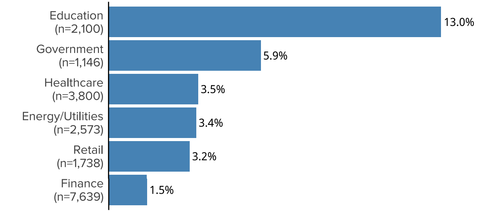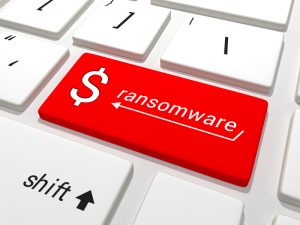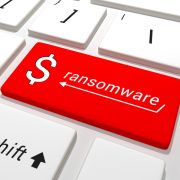See the Best Single Sign On (SSO) Solutions For Small Business and Even Better Alternatives
In today’s fast-paced digital landscape, small businesses face numerous challenges when it comes to managing user access to various applications and systems. A single sign on for small business is unlike the traditional methods of authentication, such as separate usernames and passwords for each platform, can be cumbersome, time-consuming, and prone to security risks. That’s where Single Sign-On (SSO) solutions for small businesses comes in.
Single Sign-On is a powerful authentication solution that enables small businesses to simplify and centralize user access across multiple applications, platforms, and services. With SSO, employees and stakeholders can log in once using a single set of credentials and gain seamless access to all authorized resources.
This technology not only enhances convenience and productivity but also strengthens security measures by reducing the risks associated with weak passwords, password reuse, and unauthorized access. By implementing SSO, small businesses can effectively mitigate the complexities of managing multiple logins and bolster their overall operational efficiency.
As you move your small or midsize enterprise into the cloud, you will face new challenges around identity management. Historically, identity management was an operational issue that managed user logins to desktops and local area networks. As you move to the cloud, the network is no longer local. Your network includes the suite of applications and services run and hosted by others. Identity management is now a security issue that should control access to your cloud applications, data, and services as well as your computers and mobile devices.
Single Sign On for Small Business
Even with the proliferation of usernames and passwords, most small businesses are not investing in Single Sign On (SSO). With many applications using federated or 0Auth login services from platforms like Google Apps or Office 365, SMBs expect users to adapt and manage their identities. The result is a mix of usernames, passwords, and connections without a clear system of record and no centralized management. And while Single Sign On can help eliminate this mess, most SMBs struggle to justify the value. In addition, single sign on solutions for small businesses lack the ability to manage access to devices, WiFi services, and other resources.
With SSO in place, you still need to manage and maintain a directory service. Directory services, such as Microsoft’s Active Directory and the many LDAP solutions are, in theory, capable of managing more than on-premise systems. Actually integrating directory services, however, is complex, costly, and requires regular maintenance.
Directory-as-a-Service and Identity Management
Directory-as-a-Service® (DaaS) is a modern identity platform that centrally manages user connections to this new world of cloud and SaaS-based infrastructure.
Compared to a single sign on for small businesses, it acts as a virtual directory, enabling businesses to securely manage user accounts, permissions, and policies across diverse applications, systems, and even remote environments.
Identity Management, on the other hand, refers to the processes, technologies, and policies that govern the lifecycle of user identities within an organization. It encompasses activities such as user provisioning, authentication, access control, and user lifecycle management. By implementing Identity Management practices and leveraging DaaS, businesses can streamline user administration, improve security, and enhance operational efficiency.
Features of a cloud-based directory service include:
- Mac, Windows, and Linux devices are all treated as first-class citizens
- Tight integration with Office 365 and Google cloud Apps, centralizing control over the productivity platform and enabling single sign-on capabilities for end users
- Single Sign On integration with other cloud applications and services
- Improved WiFi security that connects the authentication request to the directory service
- Multi-factor authentication at the system level
- Hosted LDAP capabilities can eliminate the need to have an on-prem LDAP server
In short, Directory-as-a-Service covers what contemporary organizations need in a modern identity management platform.
Learn more about Directory-as-a-Service and JumpCloud (our preferred DaaS solution), or contact us for a free, no obligation Cloud Advisor Session.

 New Names, Same Great Solutions
New Names, Same Great Solutions Whereas most enterprise cloud strategies focus on building new line of business applications and rebuilding existing systems for the cloud, most small and midsize businesses are not building or customizing their own applications. When SMBs do use custom applications, they typically rely on outside firms for development and support. When SMBs move to the cloud, they normally start with “infrastructure” services like email and file services. Existing business applications are often replaced by SaaS (Software-as-a-Service) cloud solutions — either from the current vendor or as a replacement.
Whereas most enterprise cloud strategies focus on building new line of business applications and rebuilding existing systems for the cloud, most small and midsize businesses are not building or customizing their own applications. When SMBs do use custom applications, they typically rely on outside firms for development and support. When SMBs move to the cloud, they normally start with “infrastructure” services like email and file services. Existing business applications are often replaced by SaaS (Software-as-a-Service) cloud solutions — either from the current vendor or as a replacement. As reported in
As reported in 

 On September 13, 2016, Apple will release iOS 10 and will stop providing updates for iOS 9. While iOS 10 is reported have some great new features, the real story for schools — particularly those with iPad programs — is the impact on existing devices and budgets.
On September 13, 2016, Apple will release iOS 10 and will stop providing updates for iOS 9. While iOS 10 is reported have some great new features, the real story for schools — particularly those with iPad programs — is the impact on existing devices and budgets.  Over the past several weeks, we have been aggressively communicating with our customers and others about the sharp rise in ransomware hitting small and midsize enterprises. We have blogged about the need for
Over the past several weeks, we have been aggressively communicating with our customers and others about the sharp rise in ransomware hitting small and midsize enterprises. We have blogged about the need for 
 The cyber criminals behind ransomware see their efforts as a volume business. Charge too much, and victims will not pay. Targeting businesses and organizations in wealthier countries and in cities where people and businesses are most likely able to pay, the typical ransom is often about $500. More recently, we have heard of ransoms between 1 and 2 bitcoin (about US$600 to US$1300).
The cyber criminals behind ransomware see their efforts as a volume business. Charge too much, and victims will not pay. Targeting businesses and organizations in wealthier countries and in cities where people and businesses are most likely able to pay, the typical ransom is often about $500. More recently, we have heard of ransoms between 1 and 2 bitcoin (about US$600 to US$1300).